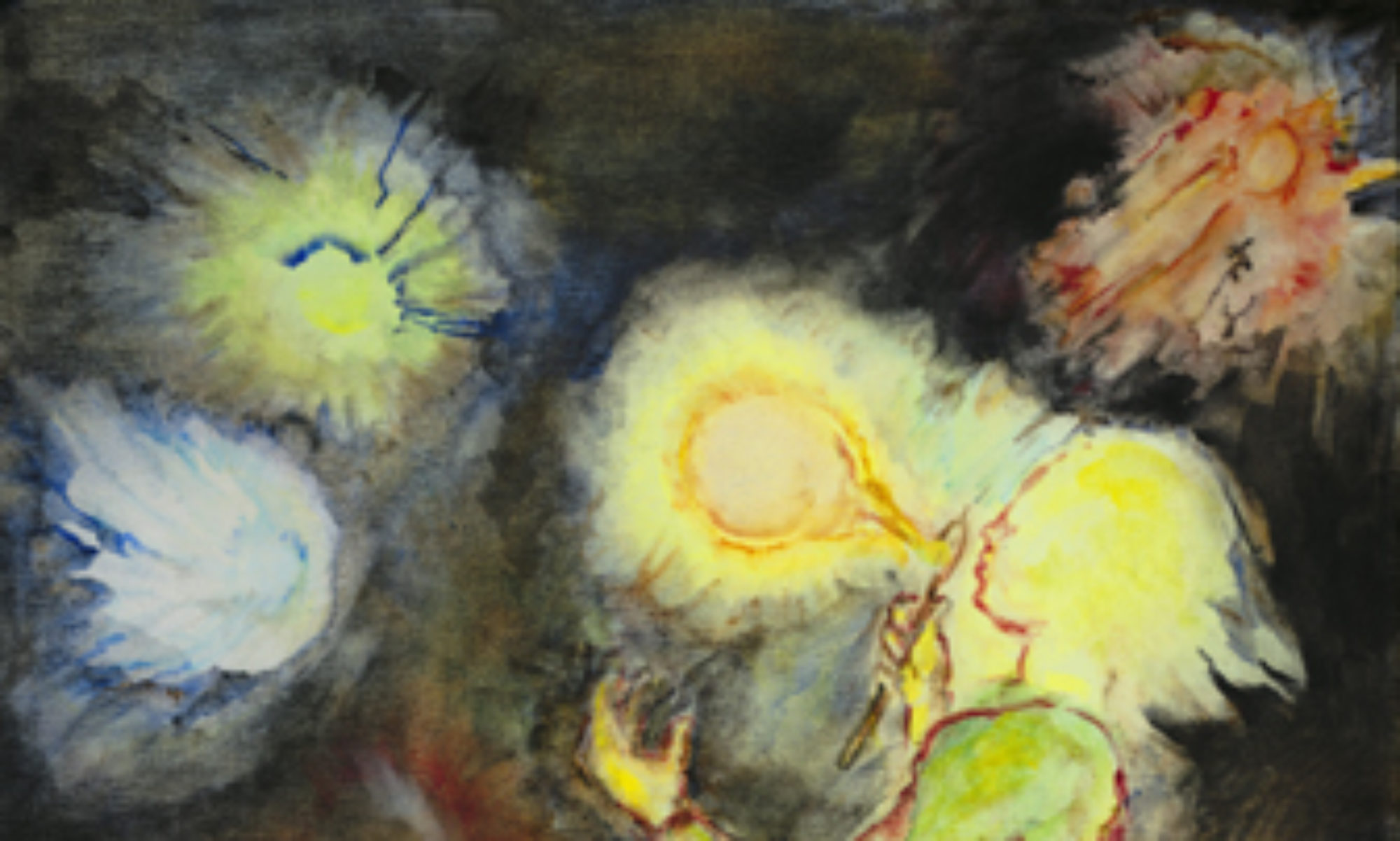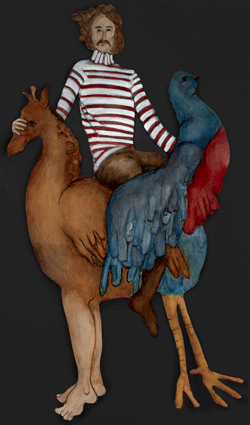
I am completely enchanted by doors, especially unusual ones – they always lead somewhere, and create a division between one place and another, whether you pass through or walk away.
There’s a quotation from Aldous Huxley that I heard via Jim Morrison of The Doors: “There are things known and there are things unknown, and in between are the doors (of perception).” It grew into choreography for a full-length dance called The Doors, which debuted in two New York venues a few years ago, using doors I painted to open to Birth, Death, Fear and Love.
Hidden beauty is doubly intriguing to me, and when I was traveling in Peru and first spotted the locals’ retablos, I couldn’t tear myself away. I immediately bought one, a small wooden house whose doors open to a whole village of carved and painted people celebrating, dancing, playing music and generally having a marvelous, colorful time, with a kind of medieval lack of perspective and large and small figures crammed together. Every time I open the doors, I imagine that I hear the music, and every time I close them I feel it fade behind them. The figures have lost some of their color, but none of their verve, over the years.
Looking at the retablo years later, when I was painting several series on the four seasons, it occurred to me that I could put the seasons behind a set of doors and they could be shown together or opened one at a time. I asked a sculptor and cabinet-maker friend, Brad Rhodenbaugh of Cincinnati, to make a really rich, thick walnut framework and polished doors, a double frame for each pair of seasons. The result was Seasons Behind Doors.

I painted the four seasons on stretched canvas, each one three feet by two feet: Fall as a tree seeing the migrating birds away; Winter as a man whose body is built up of hibernating animals; Spring as a rainwoman and Summer as a young man, ecstatic and drunk on the bounty of sunshine, fruit and flowers.

Each pair, framed, is 98 inches across (a little over eight feet) when both doors are fully opened; closed, each pair is 54 inches wide (four and a half feet). The framed Seasons are 40 inches high. At the time I painted them, I had a client with a huge, sweeping wall and she was thinking of setting the two double paintings in a line across the wall and opening each panel as the seasons came, leaving the previous one open, until the end of the year, when they would all close. However, her daughter decided that she wanted the wall for a photo gallery and since then, the Seasons Behind Doors have been stored away; I am just bringing them out now.


 When I created my first paintings in oil on shaped wood panels, I had no idea they were in the tradition of a very old technique. I wanted figures that could hang from a central carousel in an installation at the Cincinnati Arts Consortium, moving through areas themed for Earth, Water, Fire and Air, and painted wood sheets seemed to be a good solution.
When I created my first paintings in oil on shaped wood panels, I had no idea they were in the tradition of a very old technique. I wanted figures that could hang from a central carousel in an installation at the Cincinnati Arts Consortium, moving through areas themed for Earth, Water, Fire and Air, and painted wood sheets seemed to be a good solution.